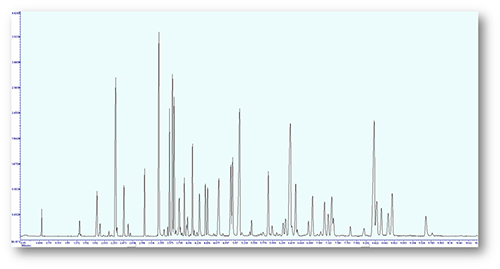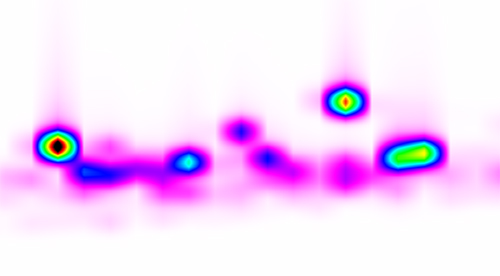
TOF vs. quadrupole
In this article, we will show you why GC/MS-TOF is a more suitable technique for modern GC/MS analyzes than the decades-old quadrupole analyzer technology.
1) Why does TOF provide better quality data?
The higher speed of the Time of Flight GC/MS system means a higher number of spectra per chromatographic peak. The analyst therefore has more data at his disposal and, thanks to the unique deconvolution algorithm, can identify compounds that have similar properties (isomers, etc.), when resolution by mass spectrum at the unit level is not enough for us.
TOF can work with MS spectrum analysis in the entire m/z range – thanks to good sensitivity, there is no need to use SIM mode and thus the analyst does not lose qualitative information about the structure of the compound. This can play a big role in inter-laboratory control or in cases where there are different results between laboratories.
2) Higher sensitivity
Time off Flight is not a scanning analyzer, but a pulse analyzer. Thanks to the high ejection rate of 30kHz, it enables the collection of spectra up to 1000/s, which a quadrupole analyzer cannot achieve. In addition, the quadrupole must return to the original value of the electric field after one scan, which takes additional time, the so-called "Interscan time". This significantly increases the average time of one scan. E.g. if PBDE analysis is performed in the range of 100-1000 amu, a GC/MS system with a scanning speed of 20000 amu/s, we will achieve a data collection rate of <20 spectra/s. With the TOF analyzer, we can easily achieve 200 spectra/s, i.e. 10x more. Higher speed enables not only Fast GC/MS, but better quality data. Fast GC/MS provides higher peaks, thus a better signal-to-noise ratio. In addition, in the analysis of compounds such as PBDE, it is necessary to analyze the entire mass spectra, and in the quadrupole analyzer, we thus lose a lot of sensitivity in EI.
3) Economy of operation
When using GC/MS-TOF, we achieve a high speed of collecting spectra, so we can shorten the analysis by 3x to 4x when using a suitable column (0.10 or 0.18 mm ID). This will significantly save on device operating time, carrier gas consumption and increase sample throughput. This can not only increase the capacity of the laboratory, but also speed up the delivery of analysis results.
In the given example, you can see the analysis of the perfume by Fast GC/MS, which took only 10 minutes .

- 82 identified compounds with a concordance factor >750
- acquisition rate 25 spectra/s
Analysis of an unknown complex sample containing a mixture of high concentrations of aliphatic hydrocarbons and low concentrations of branched aromatics.

The blobs in the chromatogram show the ion chromatogram for m/z=131 . The record nicely shows a lot of co-elutions and demonstrates that SIM mode or the TSQ analyzer will not resolve the separation of these aromatic compounds. Mixed or identical MS spectra do not allow unambiguous identification in one dimension.





 0
0
 0
0